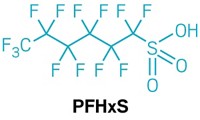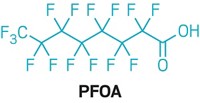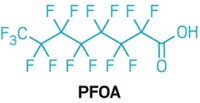Advertisement
Grab your lab coat. Let's get started
Welcome!
Welcome!
Create an account below to get 6 C&EN articles per month, receive newsletters and more - all free.
It seems this is your first time logging in online. Please enter the following information to continue.
As an ACS member you automatically get access to this site. All we need is few more details to create your reading experience.
Not you? Sign in with a different account.
Not you? Sign in with a different account.
ERROR 1
ERROR 1
ERROR 2
ERROR 2
ERROR 2
ERROR 2
ERROR 2
Password and Confirm password must match.
If you have an ACS member number, please enter it here so we can link this account to your membership. (optional)
ERROR 2
ACS values your privacy. By submitting your information, you are gaining access to C&EN and subscribing to our weekly newsletter. We use the information you provide to make your reading experience better, and we will never sell your data to third party members.
Environment
EPA Sets Safe Dose for Perchlorate
Move will lead to new cleanup guidance for Superfund sites
by Cheryl Hogue
February 28, 2005
| A version of this story appeared in
Volume 83, Issue 9

POLLUTION
As expected, EPA has adopted the National Research Council's recommendation for a safe daily dose for human ingestion of perchlorate.
EPA on Feb. 18 set its safe dose for perchlorate at 0.7 g per kg of body weight per day, a level recommended by NRC in January (C&EN, Jan. 17, page 13). The agency's earlier dose estimate was 0.03 g per kg per day.
According to EPA, the safe dose means a 154-lb adult human could safely ingest 2 L of drinking water a day containing 24.5 ppb perchlorate. However, this calculation does not equate to a health-based drinking water regulation for perchlorate, an EPA spokesman cautions.
Perchlorate is a highly soluble component of solid rocket fuel. The chemical can inhibit uptake of iodine by the thyroid, and thus may lower the body's level of thyroid hormone. Perchlorate taints drinking water in 35 states at levels of at least 4 ppb.
In a related development, researchers at Texas Tech reported online last week in [Environ. Sci. Tech., published online Feb. 22, http://dx.doi.org/10.1021/es048118t] that human breast milk across the U.S. holds unexpectedly high levels of perchlorate. Breast-fed babies, on average, drink more than two times NRC's recommended safe daily dose, the lead author says.
Meanwhile, EPA says it plans to use the new safe daily dose level to revise guidelines for Superfund cleanups involving perchlorate. Currently, EPA operates under interim guidance recommending that perchlorate cleanup goals at Superfund sites range between 4 and 18 ppb. If the agency increases the level, perchlorate cleanup costs would go down.
Perchlorate remains on EPA's list of about 50 unregulated contaminants in drinking water. The agency is reviewing these chemicals to determine which of them it should regulate.





Join the conversation
Contact the reporter
Submit a Letter to the Editor for publication
Engage with us on Twitter